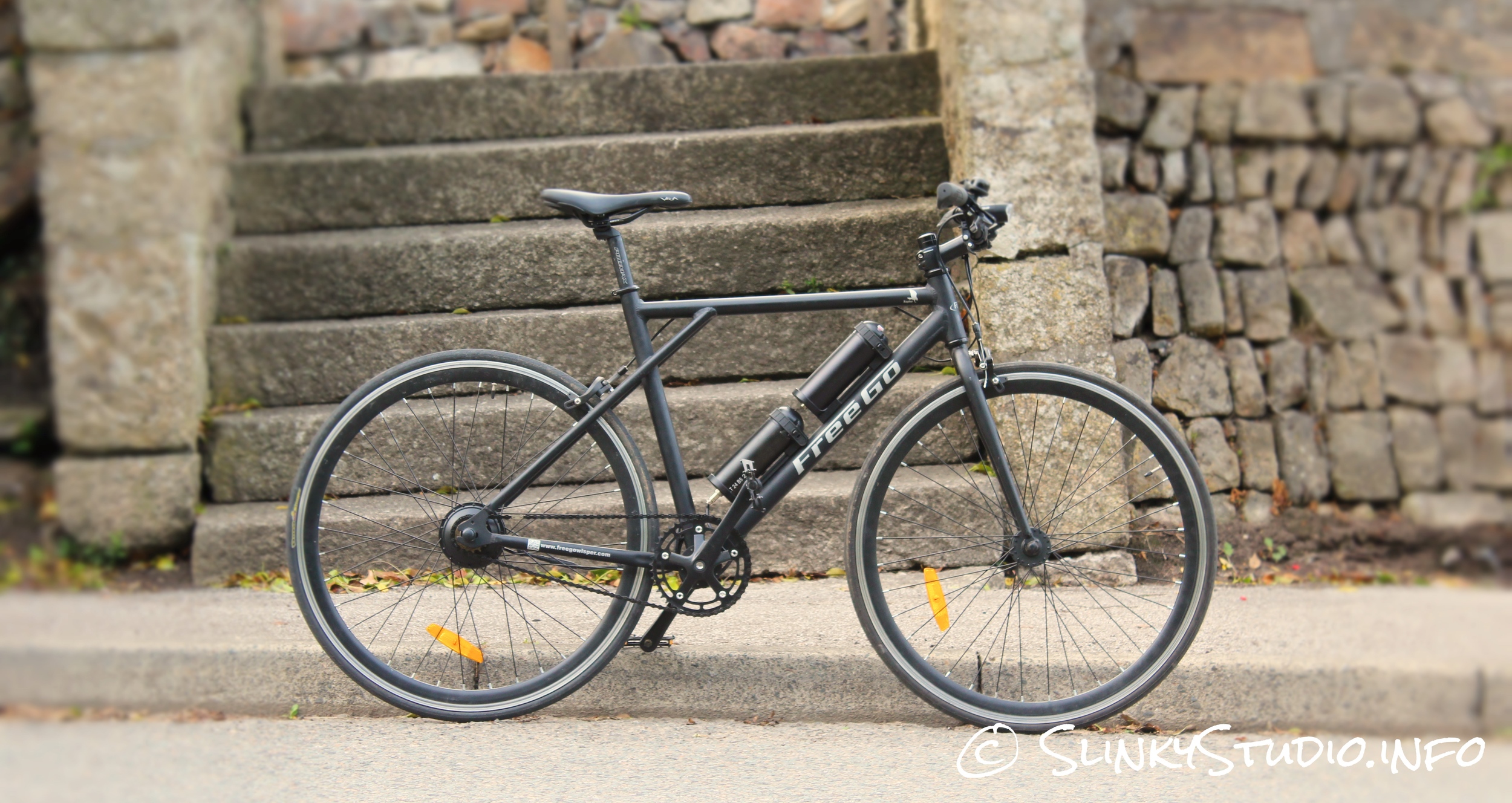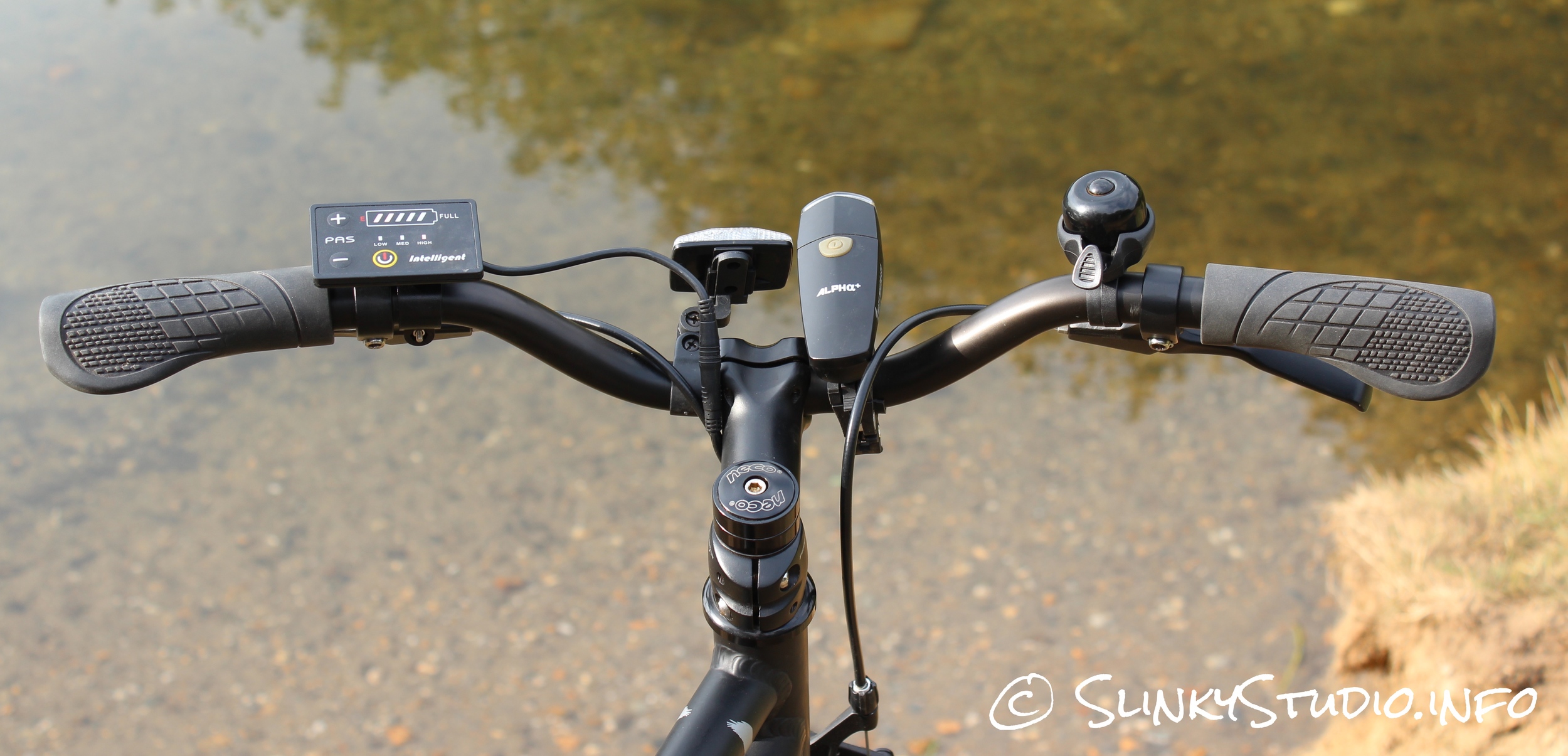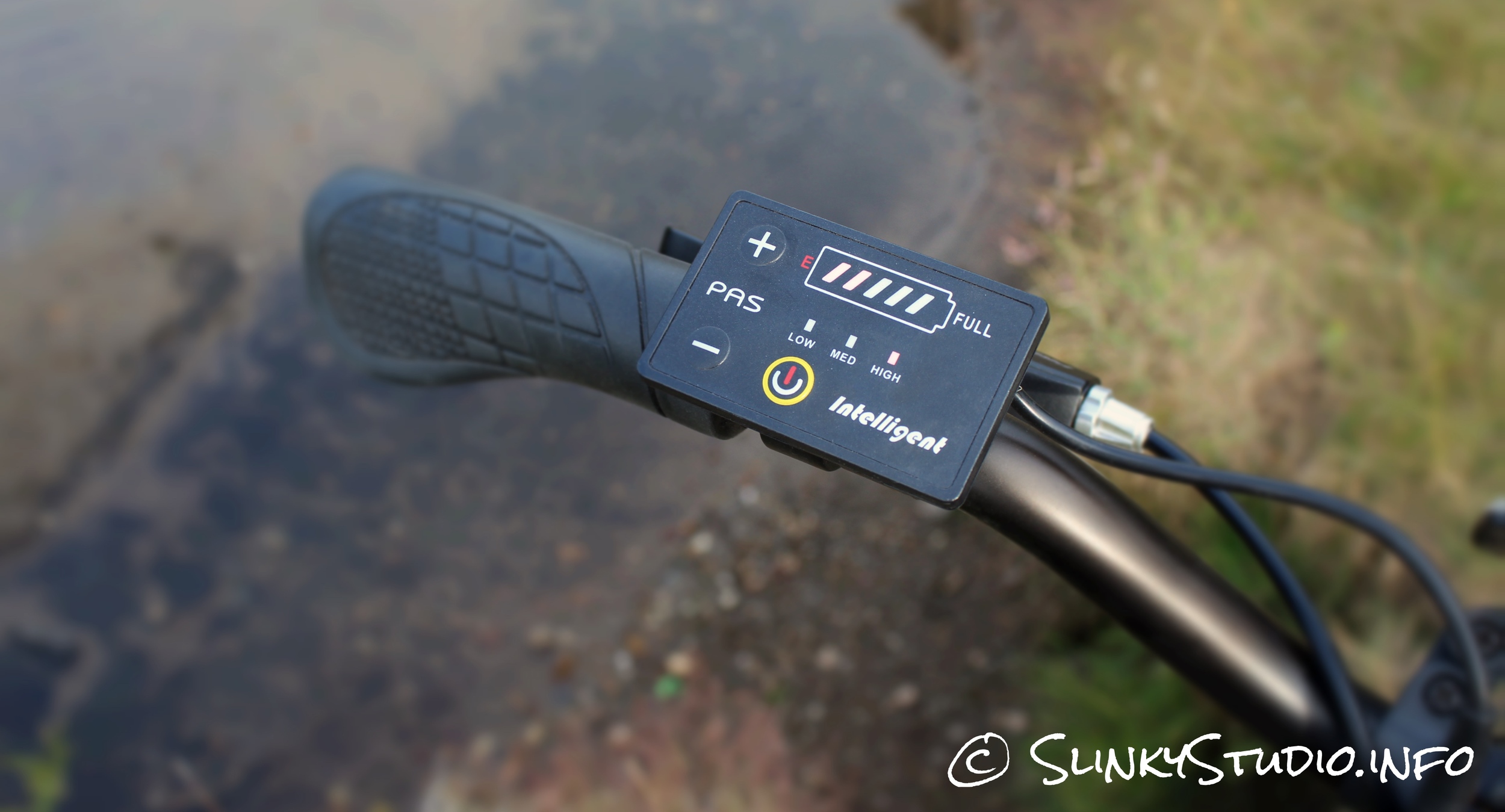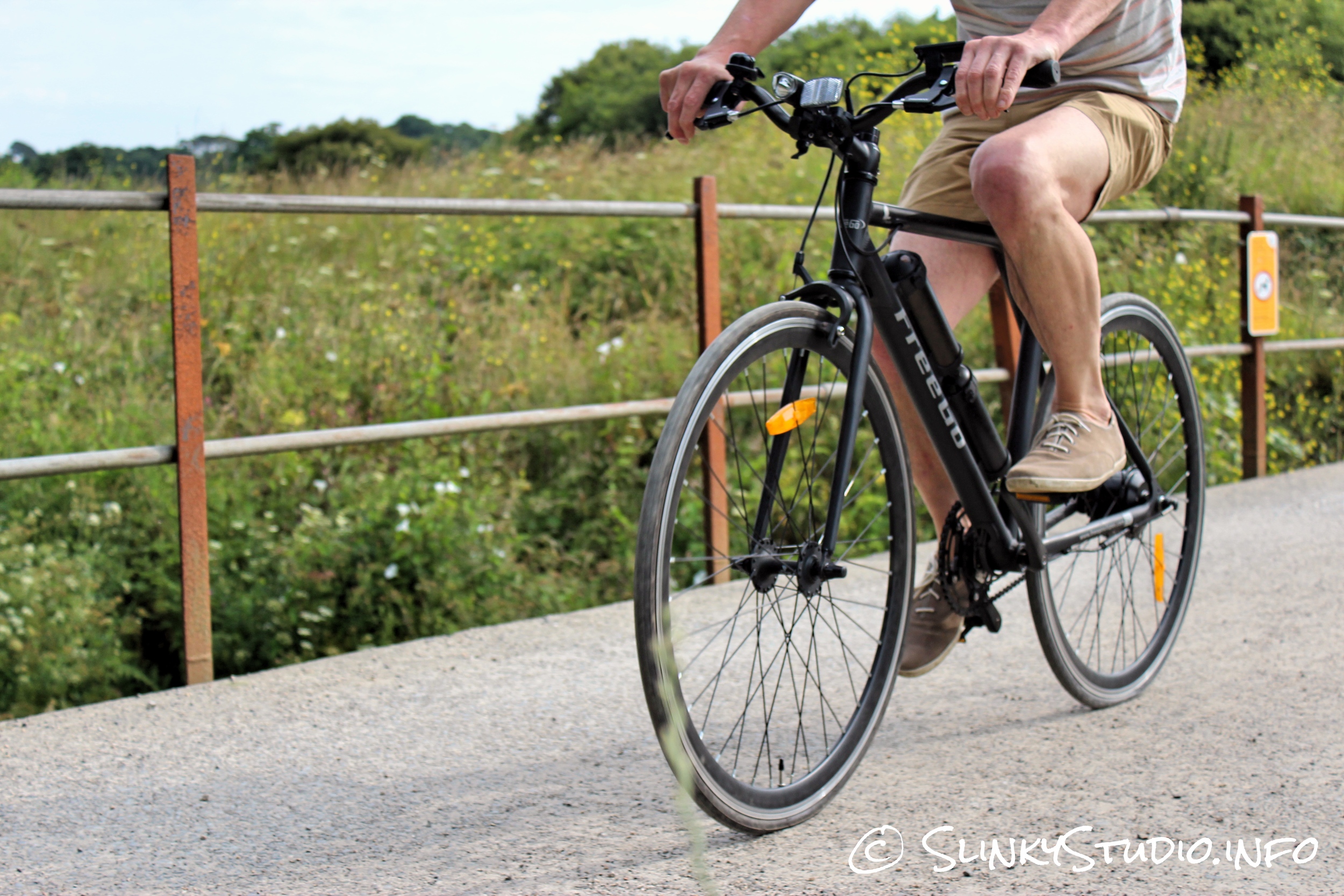FreeGo Raptor eBike Review
The lightweight road bike is popular with commuters, yet eBikes have repeatedly failed to really understand this segment. Since the millennium we’ve seen dozens of eBike’s come to market that attempt to squeeze into this class, but more often than not their efforts are overlooked due to the motor, batteries and frame exceeding the weight most people would be happy to lug around when carrying becomes necessary between rides. At a slim 14.25kg with one battery, the FreeGo Raptor eBike is trying extremely hard to be taken seriously in this segment, but do their efforts pay off?
Design
Interestingly enough, everyone that we’ve shown the silk black FreeGo Raptor to, has been completely oblivious of its electrical nature. Much to their credit, the folks at FreeGo have charmingly redesigned the look of bulky batteries and the general appearance of what the obvious electrical fluff should look like. They’ve decided that the supplied batteries will appear like water bottles and that they are mounted in exactly the same familiar manner. Adding to this handsome subtlety, the motor located within the spokes of the rear wheel, is so impressively and ludicrously tiny, that it just can’t be noticed.
For us the highlight of the Raptor is its weight, or rather the lack of it. At 12kg without any batteries equipped (less than the standard female Pendleton Drake Bike we reviewed last year), and even at 16.5kg, when including two 5.5Ah batteries (one being a spare for longer distance riding), it maintains an overall slim and reasonably lightweight design. We really couldn't complain about picking it up to put onto the back of the car or having to carry it upstairs to leave in a hallway. Demonstrating the desire from FreeGo to relieve the grams is the hand-made aluminium frame, aluminium forks, seemingly light KMC chain, 28” aluminium V twin wall rims and stainless steel spokes. The quality and strength of these components became clear over the course of our endless cycling and we believe it’s exactly the right direction to head in for an urban environment; undoubtedly positioning the Raptor as a serious eBike contender across the age groups.
Controller
A single control panel is situated on the handle bars, with an LED battery indicator status and plus & minus buttons for toggling between the three 'speed assistance' modes. Admittedly this is an easy setup to use whilst cycling, although the control panel does appear sparse without other rider-user features. We would have appreciated some detail of speed and miles travelled, offering a more informed out of the box experience.
Battery Range & Charging
The FreeGo Raptor comes in two versions, one with a single 5.5Ah battery and our model which has an extended range by being supplied with two 5.5Ah batteries. Each 5.5Ah battery on the FreeGo Raptor has a claimed range of 10-15 miles, and from our 'real world' riding use, we think FreeGo's claims are honestly accurate. Range is tricky to properly calculate: for example, if someone was to be on a back and forth daily commute from their home to workplace, and the trip in had a severe uphill struggle, then a downhill roll on the way back, you may only squeeze 6 miles out of a single 5.5Ah battery getting to work, but then use the hypothetical remaining 10% going home, thus delivering a combined 12 mile range from a single battery. So in terms of combined usage on country and urban roads, we commonly achieved over 10 miles from each battery on the fastest of the three speeds. Compared with similar eBike batteries, it would appear the light design of the FreeGo Raptor optimises energy used, and we were very impressed with the ranges it achieved during our tests.
Once a battery is drained, swapping it over with a fully charged one is truly easy, quick and simple. First the drained battery has the power cable unscrewed (no tools necessary) and then the single rubber strap unfastened; and it can be swapped over with the charged battery by simply reversing the procedure. Refreshingly, this isn't an onerous task and takes around 1 minute by the roadside. Once home, the supplied charger will charge each drained battery to full in around 3-4 hours.
The Ride
FreeGo have constructed this bike for a comfortable and nimble ride when used for continual daily commuting and short runs to the shop. It’s not obtrusive in any way because it’s an eBike, but instead comes over as just a rather good road bike in its own right. Although the sports saddle is a little harder than we’d personally like, the rest of the setup, including handlebars and overall body position, we found to be restful and secure. The thin 32mm sports tyres deliver tremendous grip that make manoeuvring the often cluttered urban landscapes pleasantly controlled. Furthermore, when combined with electrical assistance, riding amongst urban traffic, particularly getting away quickly from a stationary position, becomes less strenuous, therefore making such environments generally more enjoyable and safer to ride within. Granted that the FreeGo Raptor isn't designed to stumble far off the asphalt, the fact is that gravel paths and the odd cobble will prove no problem. Outside of this permit, woodlands and similar terrains are simply not compatible, due to the lack of suspension and high pressured thin sports tyres. Calliper brakes are featured on the front and back of the Raptor, and whilst they don't perform as quickly as disc brakes would, they bring the bike to a stop without any shudder and appear to kill the motor when engaged.
As a peddle assisted eBike, as opposed to an eBike with a throttle, the Raptor always requires peddling to make the electric motor kick-in for assistance, but the moment the motor is triggered it whisks the bike forwards and, by working in partnership with our peddling, the reward is an effortless build-up of speed, with the ability to confidently take on steep hills and other obstacles with ease. There are three choices of 'assistance' offered, which means you can conserve battery power by doing more work yourself with the peddling, particularly during straightforward flat and easy rides, by keeping the assistance on settings 1 or 2. Of course, the assistance can be turned to zero, making it a normal single-geared bike. We found this a useful function once you have brought the bike up to your required speed on the flat - the electric powered assistance having taken the legwork out of the build-up.
Our riders, weighing in at 60kg-75kg, found the power of the motor remained strong and very helpful during our rides. The maximum weight for a rider is 120kg. Worth noting is the bike's high torque 200W brushless motor is always near silent in operation and impossible to hear in and around an urban landscape.
Once around 15.5mph is reached, the 200W motor doesn't continue to work for greater speeds. This is partly because the FreeGo Raptor is designed around the EAPC legislation requirements within the UK and EU, which state 15.5mph for an eBike is the maximum speed allowed whilst powered by the motor on the roads. Nevertheless, 15.5mph is a brisk speed that the motor happily reaches with a calm and sedate amount of peddling. Of course, faster speeds can be reached by peddling with further effort, just as with any other bike.
Overall
The FreeGo Raptor eBike appears as much like a familiar road bike as possible. We really like the design and particularly its amazingly lightweight construction. This is definitely a great commuter bike, but also offers an attraction for a little touring around and about at the weekend, particularly with the extra battery on-board. To find your local stockist click here.















